Philipse Patent
The Philipse Patent was a British royal patent for a large tract of land on the east bank of the Hudson River about 50 miles north of New York City belonging to the Philipse family. It was purchased in 1697 by Adolphus Philipse, a wealthy landowner of Dutch descent in the Province of New York, and in time became today's Putnam County.
.png)
Philipse bought the roughly 250 sq mi (650 km2) tract from two Dutch traders who had purchased it from "Wiccopee chiefs" of the Wappinger native American people. Originally known as the Highland Patent, it spanned from the Hudson to the then Connecticut Colony along today's northern Westchester County border.
In 1731 it was incorporated into Dutchess County, and divided in 1754 among three heirs, but remained in the Loyalists Philipse family until seized in 1779 during the Revolution. The Commissioners of Forfeiture of the Revolutionary colony of New York auctioned it in parcels, without compensation to its prior owners. In spite of a provision requiring it in the 1783 Treaty of Paris, restitution never was made. In 1812, the southern part of Dutchess County, including all of what had been the Phillipse Patent, was spun off into a new county, Putnam County.
History
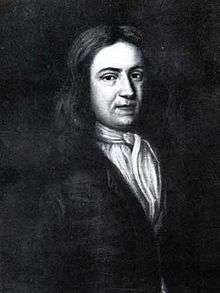
Purchase
The first step to establishing rights to real estate at the time was usually to apply to the colonial government for a license to purchase a tract of land from local Native American inhabitants. Natives typically had notions of communal sharing of land resources and did not understand that by such sales the buyers intended to acquire the right to exclude the native sellers from all access to the land. On December 2, 1680, Dutch traders Lambert Dorlandt and Jan Sybrant (Seberinge) applied to the New York Colonial government for such a license and on July 15, 1691 "purchased" a large tract of land that embraced much of what is today Western Putnam county from local Native Americans, including Wiccopee chiefs. Dortlandt and Sybrant did not then themselves obtain the land patent from the governor but in 1697 sold their rights to the land to Adolphus Philipse, a wealthy merchant.[1]
Adolphus was the second son of Frederick Philipse, the first Lord of the Manor of Philipsborough, a Dutch immigrant to North America of Bohemian heritage who had risen to become one of the greatest landholders in New Netherland.[2] and extended approximately 13 miles along the east shore of the Hudson River, from Annsville Creek to the Fish Kill, and eastward some 20 or so miles to the border of the Colony of Connecticut, including Pollopel Island in the Hudson.[3][4]
Shortly after purchasing it, Philipse, whose residence was the Philipse Manor Hall near Tarrytown, and who maintained only a bachelor shooting lodge on Lake Mahopac in the Highland Patent, opened the tract to tenant settlers. Thus began a policy that lasted throughout his lifetime and his heirs' so long as they owned the land,[3] to rent rather than sell, a practice which led to stunted growth for two and a half centuries to come.

A surveying error during the establishment of the border between the provinces of New York and the Connecticut Colony resulted in a portion of a disputed tract known as The Oblong spanning the entire eastern border of the Patent. The proper boundaries were not resolved until a land swap between the then U.S. states late in the 18th century.
Inheritance
Upon Frederick's death in 1702, Adolphus inherited a partial share of the Manor's lands,[3] which then amounted to over 80 square miles and encompassed the bulk of today's lower Westchester County. The title and balance of the lands passed to his nephew, Frederick Philipse II, whose father Philip, elder brother of Adolphus, had predeceased Frederick I.
Division
Adolphus Philipse died in 1750 (Smith, 1749), with his share of the Manor and the Highland Patent he had acquired on his own passing to Frederick II, his only heir-at-law. Upon Frederick II's death in 1751, the Manor went to his son Frederick Philipse III, while the Patent was divided among four of Frederick II's offspring: son Philip, and daughters, Susannah (wife of Beverley Robinson), Mary (wife of Col. Roger Morris), and Margaret, who died intestate.
By terms of her father's will Margaret's portion was then equally divided among her brother and sisters. Based upon a 1751 survey, the tract was geographically divided on the 7th of Feb 1754 into nine Lots as seen in the preserved undated pen and ink map: three on the river, three in the interior, and three on the eastern border abutting the Oblong. Each of the three heirs inherited a lot in each division.[5][6]
Tenant uprising
Tenants in the Philipse Patent joined others throughout the Province of New York in rising against their landlords beginning in the early 1760s.[7] This reached a peak in 1766, when a tenant in the northeast of Mary Philipse's center parcel, William Prendergast,[8] fomented a small army of 2,000 men to forcibly wrest freedom from paying rent on the lands they occupied. It marched on New York City, where it petitioned the colonial Governor Sir Henry Moore to intercede, who refused, and – seemingly – defused the unrest.[9]
The landlords, however, incited by the uprising, pressured Moore to dispatch 300 soldiers north to restore order, the rebels, and capture their leader.[9] British grenadiers were dispatched from Poughkeepsie, and, after skirmishes en route resulting in several dead on each side, engaged Prendergast and 50 of his men at the Oblong Meeting House[10] in the Gore, earning their surrender. Ultimately, Prendergast was tried in New York City, convicted of treason, and sentenced to be hanged.[9]
He was to be executed on September 28, 1766.[11] However, with the aid of the presiding judge, Chief Justice Daniel Horsmanden, Pendergast's wife, Mehetibel Wing Pendergast, was able to persuade Governor Moore to seek a king's pardon.[12] It was granted by His Majesty George III, in the belief that clemency would have a more beneficial effect in quelling the dispute and restoring respect for authority among the citizenry than punishment.[13]
Seizure
Frederick was a Loyalist during the American Revolution. As such, he was attained by the Provincial Congress of New York in 1779 and his Manor and other lands in today's Westchester County were seized.[14] Several months later their sale was ordered.[15]
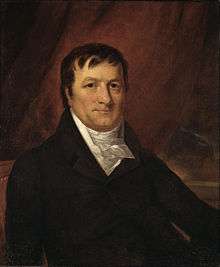
Philipse family holdings belonging to other members, principally the Highland Patent, were also seized by the Commissioners of Forfeitures. Sale was withheld during the war, as its outcome was uncertain, confiscated lands had been pledged as collateral against monies borrowed by the provisional government to finance the conflict,[16] and tenants lobbied for the right of preemptive purchase of leased land.[17]
The sale proceeded after the Revolution ended. In spite of assurances of restitution in the 1783 Treaty of Paris signed with the British,[18] and the enormous sum raised – the better part of a quarter of a million pounds Sterling[19] – New York's Provisional Congress reneged and no compensation was forthcoming.[20]
Several thousand acres of the Philipse estate went to the tenant farmers who worked on the land.[21] In all, the lands were divided up into almost 200 different parcels, with the bulk of the holdings going to Dutch New York businessman Henry Beekman.
In 1787, a British court decided that the inheritance rights of heirs to property that was confiscated by the Americans during the American Revolution was recoverable. Under this decision, John Jacob Astor I purchased the reversionary rights to the Philipse lands in 1809 from the heirs of Roger Morris (husband of Mary Philipse) for £20,000. After Mary Philipse Morris died in 1825, Astor attempted to collect rents on the lands, but the new “owners,” who had purchased from the lands from the NY Commission of Forfeiture, refused to pay, and Astor tried to evict them. A compromise was reached in 1828 when NY State compensated Astor for the reversionary rights in the amount of $500,000.[22][23]
Incorporation
The Highland Patent had been incorporated into Dutchess County in 1737,[24] where it was known as the "South Precinct." In 1806 a very small portion north of the Hudson Highlands by the mouth of Fishkill Creek was split off from Philipstown (which had been established in 1788 out of the westernmost three and part of a fourth parcel of the Philipse Patent) and given to the Town of Fishkill.[25] In 1812 the balance of the Philipse Patent was separated from Dutchess County and became today's Putnam County.[4]
Gallery

- View from Hudson River with Bear Mountain Bridge in foreground
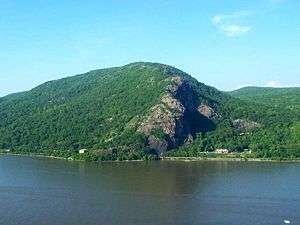 Breakneck Ridge is one of the most scenic features of the Hudson Highlands on the Patent's western extreme along the Hudson
Breakneck Ridge is one of the most scenic features of the Hudson Highlands on the Patent's western extreme along the Hudson- Sugarloaf Hill on the east bank of the river
 East Branch Reservoir in the town of Southeast
East Branch Reservoir in the town of Southeast Canopus Lake in Clarence Fahnestock State Park
Canopus Lake in Clarence Fahnestock State Park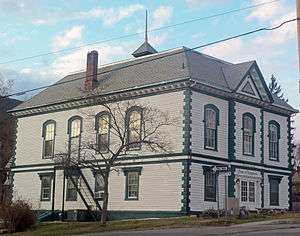 Philipstown town hall reflects the town's Dutch roots
Philipstown town hall reflects the town's Dutch roots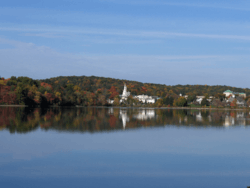 The hamlet of Carmel seen across Lake Gleneida from US Route 6
The hamlet of Carmel seen across Lake Gleneida from US Route 6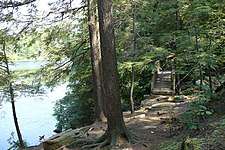 Pelton Pond in Fahnstock Park
Pelton Pond in Fahnstock Park
See also
- The Oblong
- Dutchess County land patents
References
- William Pelletreau, "History of Putnam County," (Interlaken, New York: Heart of the Lakes Publishing, 1975), pp. 10-12
- Historical and Genealogical Record Dutchess and Putnam Counties New York, Press of the A. V. Haight Co., Poughkeepsie, New York, 1912; pp. 62-79 "Adolph Philipse having thus acquired the title from the original owners, proceeded at once to take the necessary steps for obtaining a patent for his lands, and presented a petition to Benjamin Fletcher, who was then governor of the Province of New York, which was granted June 17, 1697. While the Indian deed to Dorlandt and Sebring and the subsequent transfers only conveyed the land extending back from the Hudson River to a marked tree on the line of the Rombout Patent, or "Land of Cortlandt and Company," the patent of Governor Fletcher conveyed all the land between the river and the boundary line between New York and Connecticut. To confirm his title to this additional tract Adolph Philipse obtained a new Indian deed in 1702."
- Philipse Family Adolphus Philipse, (The Patent) Archived 2007-09-28 at the Wayback Machine
- Smith, Philip Henry, General History of Putnam County: From 1609 to 1876, inclusive, published by the author, Pawling, NY, 1877, p. 44
- Pelletreau, William, S, History of Putnam County, New York – With Biographical Sketches of its Prominent Men, W.W. Preston & Company, Philadelphia, 1886 https://archive.org/details/historyofputnamc00pell History of Putnam County, New York
- French's Gazetteer of the State of New York (1860): “The Philipses Patent… divided among the remaining three [children] Philip… Susannah married to Beverly Robinson, and Mary married to Col. Roger Morris. On the 7th of Feb 1754, the patent was divided into 9 lots: 3, each 4 mi. square, bordering upon the Hudson and denominated ‘water lots;’ 3, each 4 mi. wide by 12 long, extending N. and S. across the patent, and denominated ‘long lots;’ 3, each 4 mi. square, upon the E. border denominated ‘back lots.’ Philip, Susannah and Mary Philipse each owned one of each kind of lots.
- "The Colonial Period of Putnam County: The South Precinct of Dutchess County: The Great Rebellion of 1766", Pamela Ricciardi Paschke, New York Genealogical and Biographical Society, June 4, 2019
- Who claimed he had received a perpetual lease to his lands directly from the Wappinger Indians in return for an annual tribute in crops, cattle, and time. "The Heroine of Quaker Hill, Part I", Robert Reilly, Pauling Town Historian, The Pauling Record, July 18, 2018
- "The Heroine of Quaker Hill, Part II", Robert Reilly, Pauling Town Historian, The Pauling Record, August 19, 2018
- A log church. New York State Historic Markers, "Settler's Revolt", Historic Patterson, New York
- “The prisoner shall be led back to the place whence he came, and from thence shall be drawn on a hurdle to the place for execution, and then shall be hanged by the neck, and then shall be cut down alive, and his entrails and privy members shall be cut from his body, and shall be burned in his sight, and his head shall be cut off, and his body shall be divided in four parts, and shall be disposed of at the King’s pleasure.” (trial record) "The Heroine of Quaker Hill, Part III - The Trial of the Century", Robert Reilly, Pauling Town Historian, The Pauling Record, September 14, 2018
- "The Heroine of Quaker Hill, Part IV - The Ride for His Life", Robert Reilly, Pauling Town Historian, The Pauling Record, September 14, 2018
- In response to Moore's petition the Earl of Shelburne wrote to the Governor on December 11, 1766 on King George III's behalf: "I have laid before the King your letter of the 11th of October, recommending William Prendergast, who was sentenced to death for treasonous practices and riots committed in Dutchess County, to the Royal Mercy, and His Majesty has been graciously pleased to grant him this pardon, relying that this instance of His Royal clemency will have a better effect in recalling these mistaken people to their duty than the most rigorous punishment." - "The Heroine of Quaker Hill, Part V - Happily Ever After", Robert Reilly, Pauling Town Historian, The Pauling Record, October 26, 2018
- Description of the Abstract of Sales, Commissioners of Forfeiture “An Act for the forfeiture and sale of the estates of those who have adhered to the enemies of this state” was passed by the Provincial Congress on October 22, 1779. The law seized the land of fifty-nine loyalists, and, if they were found guilty of loyalism, banished them from the State of New York upon penalty of “death without benefit of Clergy.”(5) Among those attainted was Frederick Philipse, owner of the Manor of Philipsburg, the largest tract of land in Westchester County.(6) Also on October 22, 1779, writes historian Vivienne L. Ratner, “the Governor was authorized to appoint Commissioners of Forfeitures to dispose of the confiscated estates,” with tenant farmers, “who had leased…and improved the land,” given first priority to purchase their tracts."
- Description of the Abstract of Sales, Commissioners of Forfeiture “A law passed on March 10, 1780, called for the immediate sale of portions of the forfeited lands to pay for apparel and provisions needed by the troops.(8) On March 18, 1780, the United States Congress passed an Act which mandated the issuance of new currency, backed by the credit of the states to which the bills were allotted. Each state was to pay off one-sixth of the bills annually. On June 15, 1780, the New York legislature reserved the larger of the forfeited estates, including that of Frederick Philipse, as collateral for the redemption of the bills issued by New York in pursuance of the act of Congress of March 18, 1780. The Commissioners of Forfeitures, however, were not permitted to sell any of the mortgaged lands until further instructions from the Provincial Congress."
- Description of the Abstract of Sales, Commissioners of Forfeiture "Sales of the estates set aside on June 15, 1780, and of other forfeited lands were authorized by the state legislature on October 7, 1780. The Governor was to appoint commissioners to sell forfeited lands for gold, silver, or Congressional bills of credit, in order to pay off one-sixth the bills issued in pursuance of the act of Congress of March 18, 1780. These early transactions were not conducted by the Commissioners of Forfeitures, but rather by “commissioners of specie” who bridged the gap between the Commissioners of Sequestration and the Commissioners of Forfeitures. The majority of the forfeited estates, however, were not disposed of until after the conclusion of the war."
- Description of the Abstract of Sales, Commissioners of Forfeiture "On March 31, 1781, the right of tenants to preemption of purchase of their farms was again affirmed and the procedure for such sales further described. An act of the Provincial Congress on April 14, 1782, mandated that none of the seized lands in the Southern District was to be sold 'until the further order of the legislature.'"
- Description of the Abstract of Sales, Commissioners of Forfeiture "'Article V of the peace treaty signed by Britain and the United States in Paris on September 3, 1783, insists on 'the restitution of all estates, rights, and properties, which have been confiscated belonging to real British subjects” and to noncombatant loyalists. Tories who fought the United States were to be given one year to reclaim their property and leave the country. Payments were to be made to loyalists whose estates had already been sold. Article VI prohibited any future confiscations."
- Description of the Abstract of Sales, Commissioners of Forfeiture "The Commissioners of Forfeitures ceased operation on September 1, 1788, by an act of March 21, 1788. They had sold nearly all the tracts of land entrusted to them, raising large amounts of revenue for the state of New York. Philipse Manor alone brought in ?234,170 18 s.
- Description of the Abstract of Sales, Commissioners of Forfeiture "Many citizens of New York, however, still harbored strong resentment against the loyalists, leading the Provincial Congress to effectively nullify the Treaty of Paris of 1783 by an act of May 12, 1784."
- Description of the Abstract of Sales, Commissioners of Forfeiture "These farmers were not poor as one might expect. A combination of advantageous economic and geographic circumstances ensured that few Westchester County farmers had financial problems; many were well-to-do and some agricultural families were quite wealthy.(15) When tenant farmers could not afford or did not wish to purchase their lands, the tracts were sold to wealthy landowners, Revolutionary leaders, and businessmen from New York City.(16) Most of the buyers of confiscated estates were men. The only women to buy tracts of forfeited estates in the Southern District were either widows or administratrices of estates, or were pooling their resources with male family members to purchase a tract of land."
- Philipse Manor Hall State Historic Site website:
- French's Gazetteer of the State of New York (1860): "In 1809, John Jacob Astor bought the interest of the heirs of Morris for this property for f20,000" and brought suit against the State. "The State to protect those who held title from the Commissioners of Forfeiture, passed a law, April 16, 1827, directing 5 suits to be prosecuted to judgment in the Circuit Court of New York for review and final decision. If against the defendants, the State agreed to pay $450,000 in 5 per cent stock, redeemable at pleasure; and if the decision included improvements that had been made by occupants, $250,000 more. Three suits were tried, each resulting in favor of Astor; upon which the comptroller was, by act of April 5, 1832, directed to issue stock for the full amount, with costs. The amount issued was $561,500. Few suits have been tried in the State involving larger interests to greater numbers, or which were argued with more ability, than this."
- Seven Hills Lake history: "In 1737, the Colonial Assembly designated the Philipse Patent as the South Precinct of Dutchess County, and the Philipses began leasing farms to immigrants from Massachusetts, Connecticut, Long Island and lower Westchester."
- Putnam County Online: Boundary Changes